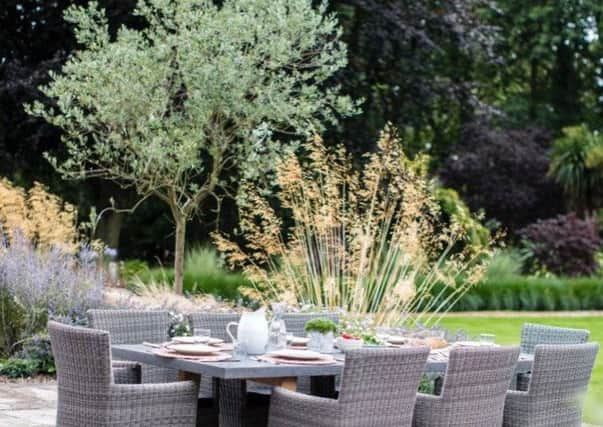Reduce property damage risk from trees and shrubs


If the soil is clay, new planting may cause it to shrink, while removing existing trees and shrubs may make it swell. Therefore, plant news trees away from your home. Find out how tall the mature tree will be and make sure it is positioned at least 1.25 of this distance from the house.
If you’re planning to grow your own fruit, order your fruit trees now ready for planting in the spring and continue planting trees and shrubs while they are still dormant.
Advertisement
Hide AdAdvertisement
Hide AdHanging fat balls and making sure you keep bird feeders topped up will help attract birds, and they will also help with pest control in your garden.
If you have any slimy patches on your paving and patio, remove them by scrubbing with a broom or blasting with a pressure washer. Also, wash empty pots by scrubbing them with hot water and a mild detergent before rinsing them well afterwards.
High water demand trees should be planted no closer to the home than one-and-a-quarter times the mature height. High water demand trees include elm, eucalyptus, oak, poplar, willow and some common cypress species.
Avoid planting climbers such as Ivy and Virginia Creeper against house walls, as they hold on using suckers, twining tendrils or aerial roots which could damage mortar and may cause damp. Plant these at least three meters away from your home.
Advertisement
Hide AdAdvertisement
Hide AdBefore cutting down or pruning a mature tree, check with your local authority to make sure that it is not protected by planning conditions, conservation area restrictions or a Tree Preservation Order.
Allow enough room for trunks and large roots to grow safely. Be particularly careful if planting near drains or lightweight structures.
■ Although you do not need to, when planting new trees in your garden that will also be near you neighbour’s house, be considerate and ask your neighbour if this is ok. As you could be liable for the cost of repair if the trees you plant cause damage to their home.
■ Regular pruning of fast growing, thirsty trees such as Cypress Leyland, will help to reduce the amount of water taken from the soil.
Advertisement
Hide AdAdvertisement
Hide AdThe level of soil around your home should be kept below the damp proof course (generally 150mm or two brick courses). Paths should also generally be kept around 150mm or two brick courses below the damp proof course, except where these have been designed to provide level access into the home. If you are not sure where the damp proof course is, ask your builder to show you. Where air bricks, permanent ventilators or perpend vents are provided, they should not be blocked or covered by soil or paving.
Rainwater is particularly useful for watering acid-loving, ericaceous plants as opposed to tap water which is often slightly alkaline so a water butt is useful.
For further advice on property maintenance visit www.nhbc.co.uk/homeowners.